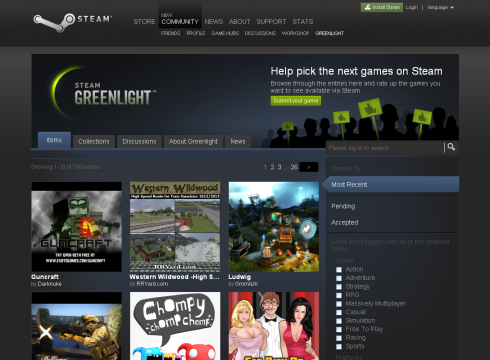Should crowd laborers be paid as contractors or employees? According to Christopher Otey, who has launched a lawsuit against crowd labor platform CrowdFlower, the answer is the latter. The results of this suit could carve a huge gash in the face of crowd labor providers, and forever change how the industry functions.
The Rundown
I’ve reported on this case before, back when I was writing for Ziptask, and you can see the full article there. The gist is that CrowdFlower, much like Amazon Mechanical Turk, is a labor platform where workers perform “tasks” for employers and receive payment according to how many they complete. It’s typically not a substantial amount of money; CrowdFlower’s own CEO has allegedly claimed that its workers are paid far below minimum wage, sometimes as low as $2 an hour.
This does not sit well with Otey, who submits that CrowdFlower’s workers should be classified as employees and receive all the monetary benefits that go with that status. He has launched a lawsuit against the crowd labor provider, and intends to obtain collective and class-action status for it, which would allow other people to join in if they also feel that CrowdFlower has treated them unfairly.
Deciding Factors
I’ve personally spoken to representatives from both sides of this case. On the CrowdFlower side, we have Rich Arnold, the Chief Financial Officer of the company, who claims that Otey’s contributions and relationship with the company are nowhere near the level that would qualify him as an employee. Otey had contributed less than twenty hours of work to CrowdFlower in the two years he worked for the site, and had also done work for many other sites like CrowdFlower. As such, he was not solely dependent on their compensation as his primary source of income. He had also failed to develop the worker/employee relationship that typically defines these arrangements; prior to this suit, Otey had not met and could not name a single person working for CrowdFlower, and no one from the site had ever heard of him, either.
Otey’s representative, labor law attorney Mark Potashnick, approaches the issue with a more big-picture perspective, viewing Otey as a stand-in for the millions of individuals contributing to CrowdFlower. These individuals, he states, do the bulk of CrowdFlower’s work, making the site completely reliant on them. Their contributions are essential to CrowdFlower’s business model, and as such, they are as crucial as any traditional employee would be. He also cites a number of other Ninth Circuit and Fair Labor Standards Act factors that would place Otey and those like him squarely in the “employee” category.
It seems like the primary deciding factor, however, will be the amount of control CrowdFlower has over its contributors while they complete tasks for the site. One of the main sticking points may be how each side defines “control”. Arnold reminds us that by the nature of crowd labor, much of the control is in the hands of the contractor in that they have the ability to decide where and when they work, and on what projects. Whether they’re passing the time completing tasks at Starbucks on their lunch breaks, or completing them at home in their underwear while watching Pulp Fiction, the power is ultimately in the workers’ hands.
Potashnick would rather direct our attention to the rigorous methods CrowdFlower has of vetting their contributors, grading their labor, and assigning high-level tasks. Through the sophisticated infrastructure CrowdFlower has set up, they have all sorts of powers, Potashnick claims, that are not dissimilar to those one would find in a traditional employer. They can track success rates of individual workers to provide feedback, or exclude them from certain jobs altogether if their skills prove unworthy. Again, since the two sides are approaching this topic from very different perspectives, it is difficult to tell which side has more heft to their arguments.
Further complicating matters are recent discovery rulings passed down to CrowdFlower, barring them from further investigating the work history of Otey. The court has ruled that such knowledge is irrelevant to the case, and that the only thing that matters is the relationship between CrowdFlower and Otey.
Endgame: The Fate of an Industry
No matter who wins the suit, crowd labor’s role in the workforce could be forever altered. There are multitudes of sites that operate under a similar structure as CrowdFlower. If it’s found that Otey, and by extension those like him, are employees rather than contractors, the ramifications would be far-reaching. This ruling would force CrowdFlower to bar its contributors in the U.S. from taking on low-paying tasks. Other companies similar to CrowdFlower may find themselves forced to close up shop rather than face the dramatic restructuring this verdict would require.
On the flip side, if it’s found that Otey and his ilk are indeed contractors, the exact opposite would occur. The precedent set by this case would protect companies similar to CrowdFlower, instead of undermining the very concepts that helped them flourish in the first place.
I found myself at a difficult crossroads when considering which side of this case has more leverage. The fact that the industry will be forever altered, regardless of the verdict, put me in a position where I really had to consider what either side’s victory would represent. A win for the plaintiffs would force some crowd labor sites to restructure and others to cease existing, but would also bring them in line with modern-day U.S. labor laws and perhaps even cement those remaining as a legitimate way to earn a living.
A victory for the defendants, on the other hand, would establish that there is a place in America for this type of labor. I like to think of crowd labor as akin to a snack vending machine; the work is convenient and there when you need it, and anyone can access it, but it’s not really substantial. It’s best used to supplement a main source of income, or as filler when you don’t have one, and I think such a service is unique and useful. Were there a defendant victory, I would love to then see U.S. labor laws restructured to allow such companies to continue comfortably existing.
Either way, I’ll be keeping a close eye on this case as it continues developing. I just hope I don’t have to watch the industry that I love die a slow, red-tape-swaddled death.





